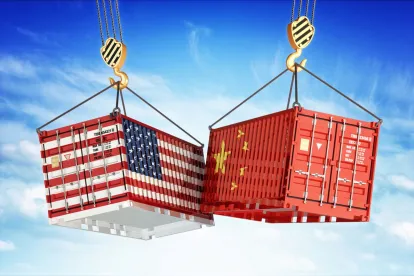On February 24, 2019, President Trump tweeted that as a result of substantial progress in the negotiations between the United States and China, additional tariffs on List 3 would not increase from 10 percent to 25 percent on March 2, as previously scheduled. At this point, no new deadline for the previously proposed increase has been formally announced.
As background, on September 24, 2018, Chinese products on List 3 of the Section 301 retaliatory tariffs, representing approximately $200 billion in annual imports from China, became subject to an additional 10 percent tariff. These were scheduled to increase to 25 percent on January 1, 2019. However, in consideration of ongoing trade negotiations with China, the White House previously announced that the List 3 tariffs would remain at 10 percent until March 1, 2019, but would increase to 25 percent on March 2.
Per President Trump’s tweet on February 24, 2019, that increase has again been delayed as trade negotiations continue, although no specific date was provided. We expect that the delay will be announced in the Federal Register shortly.
On a parallel track, Congress has voiced its intention for USTR to implement an exclusion process for List 3 products. It is expected that USTR will initiate such a process for List 3 by mid-March 2019. In anticipation of potential exclusions, interested parties should begin gathering pertinent information to support an exclusion request for List 3 products.
It is also worth noting that previously submitted exclusion requests for Lists 1 and 2 are still under review by USTR. It is not clear when the agency will complete the review process.
Outside trade issues with China, the administration continues to actively pursue a variety of other significant trade initiatives which warrant monitoring.
USMCA
The administration is pushing Congress to pass the newly negotiated United States-Mexico-Canada Agreement, (also styled NAFTA 2.0). With a new Democratic majority in the House, the administration is negotiating with Congress to gain its support for the agreement.
Section 232 on Autos and Automotive Parts
The Department of Commerce (DOC) launched an investigation to determine whether imports of automobiles and automotive parts threaten the national security of the United States, pursuant to Section 232 of the Trade Expansion Act. DOC provided its report to the President on February 17, 2019, but that report has not been made public yet, not even to Congress. The President has until May 17, 2019, to determine whether to accept DOC’s findings and what actions should be taken.
Bilateral Agreements
The administration continues to push ahead with new bilateral agreements. Of note, the administration has signaled its goal of entering into negotiations with Japan, the European Union, and the Philippines.
Emerging Technologies
The administration continues to move forward on implementing export controls on emerging and foundational technologies, pursuant to last year’s National Defense Authorization Act. The 2019 National Intelligence Strategy, issued on January 22, 2019, continues this focus by highlighting developments in emerging technologies that “have the potential to pose significant threats to U.S. interests and security.”









 />i
/>i

